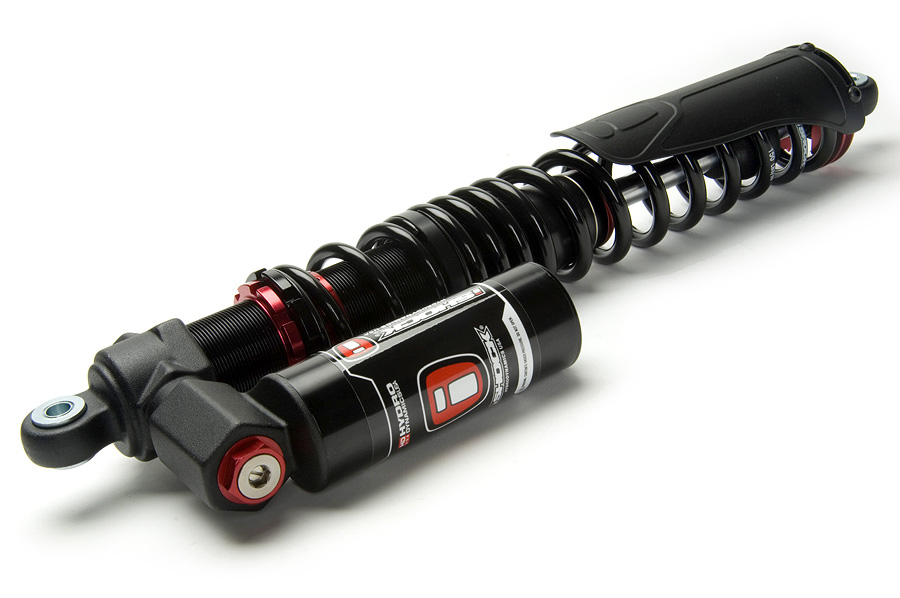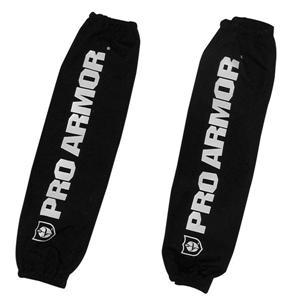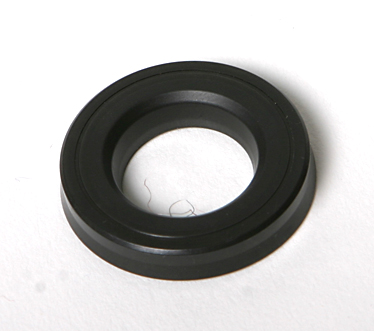ATV Suspension Stiction
 Dear ATV Connection:
Dear ATV Connection:
I was wondering if you could help me with the term stiction when pertaining to my quad’s suspension. What is it and how does it affect performance? Are there any steps to take to prevent it?
Stiction is derived from the words static and friction and it refers to a momentary pause in your suspension’s ability to move. Of course it is not a desired condition as the entire purpose of suspension action is to displace impact through controlled motion.
 For a better understanding of the science involved, we’ll take a look at the basics. Within the shock body exists a piston that moves back and forth through an oil-filled cylinder. When pressure, say from your quad landing from a jump, pushes this piston, damping force is created as the oil is forced through a series of tiny pathways called valve stacks. This process is known as compression. Once the shock spring begins to stand back up, the process takes place in reverse. This is called rebound.
For a better understanding of the science involved, we’ll take a look at the basics. Within the shock body exists a piston that moves back and forth through an oil-filled cylinder. When pressure, say from your quad landing from a jump, pushes this piston, damping force is created as the oil is forced through a series of tiny pathways called valve stacks. This process is known as compression. Once the shock spring begins to stand back up, the process takes place in reverse. This is called rebound.
Stiction occurs primarily due to two reasons:
1) Imperfections on the shock shaft’s surface
2) A process called cavitation
The first condition is the easier to remedy. Protecting the shock shaft’s surface from dings and dents can be critical in preventing stiction. This can be accomplished through a variety of means ranging from simply running shock covers to riding a safe distance behind another ATV to cut down on projectiles.
At the factory level, manufacturers are constantly experimenting with surface treatments that actually harden the shaft (or slider’s) surface. Examples include titanium-nitride-coating. A harder surface resists wear of the seals, which are a leading cause of friction.
The second condition is a bit harder to approach as it happens internally (within the shock body). Back to our earlier explanation in which the piston is pushing through its oil-filled cylinder, think about what’s happening behind the piston as it makes its way through the oil bath. Pressure on the trailing side of the piston is, naturally, much lower than it is on the side being compressed. In this scenario the oil behind the piston actually begins to cavitate; meaning bubbles get pulled into the oil. Once the piston enters into its rebound cycle, those bubbles collapse causing a momentary lapse in damping followed by a harsh spike.
Alleviating this syndrome was the advent of the external reservoir, which kept the oil pressurized by an additional piston with gas pressure behind it.
Further eliminating cavitation-induced stiction are multiple-chamber shock designs where oil is kept in separate cylinders.
Finally, since seal life plays an integral role in the stiction process, its always good practice to keep shock seals well-lubed. Consider running shock covers in particularly muddy or rocky conditions, and if you anticipate having to follow behind another quad.
To discuss this article, click here.
